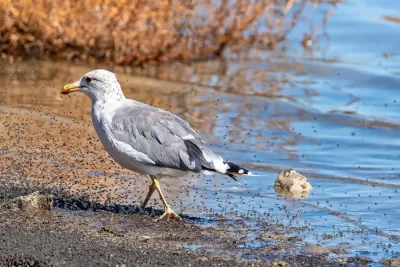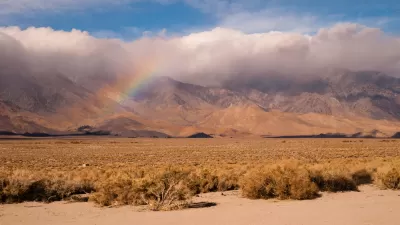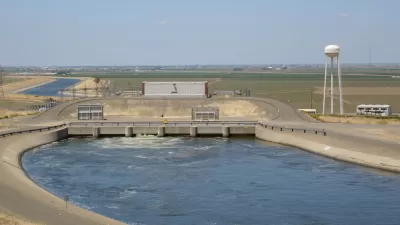Water levels at Mono Lake, nestled in a stunningly beautiful location on the eastern slope of the Sierra Nevadas that provides the eastern gateway to Yosemite, have fallen to a critical level of a local population of nesting gulls.

The nonprofit Mono Lake Committee recently filed a request with the State Water Resources Control Board that asks for the suspension of Los Angeles Department of Water and Power’s (LADWP) water diversions from Mono Lake, located about 330 miles away from Los Angeles, east of the Sierra Nevada mountain range.
According to an article by Louis Sahagún for the Los Angeles Times, the Mono Lake Committee hopes to alleviate a threat to natural habitat at the lake.
In its request, the nonprofit Mono Lake Committee argues that the combination of drought and diversions from streams that feed the lake are exposing the lake bottom near islands that host one of the world’s largest nesting gull populations. Unless this is addressed, they say coyotes will be able to access the islands and feast on the eggs of 50,000 California gulls.
Sahagún also provides a history of the city’s diversions from the lake:
Los Angeles […] has been importing water from this eerie, hyper-saline lake since World War II. Last year, the DWP rejected a committee request that it voluntarily cease its diversions of 4,500 acre-feet of Mono Lake water each year. One acre-foot of water is enough to fill an Olympic-size swimming pool halfway.
The water diverted from Mono Lake amounts to roughly 1% of the water consumed by Los Angeles residents in a year. While the city got good news about a recovered source of drinking water at the end of 2022 thanks to a superfund project in the San Fernando Valley groundwater basin, the city still relies on imported water from various environmentally troubled sources, including Mono Lake, the Colorado River, and the Owens Valley. The Owens Valley provides a regional example (located about 70 miles south of Mono Lake) of the environmental risks of L.A.s water supply diversions. The Owens Valley is completely dry, kicks up dust that is a public health risk to local residents, including the indigenous Bishop, Big Pine and Lone Pine tribes of Owens Valley Paiute Shoshone Indians.
Meanwhile the number of gull nests around Mono Lake declines. “The largest number of gull nests ever recorded at Mono Lake was about 32,000 in the early 1990s. In 2019, 11,075 nests were counted, the lowest number recorded over the 34-year course of one of the longest studies of birds in North America,” reports Sahagún.
FULL STORY: Conservationists fight to end Los Angeles water imports from Eastern Sierra’s Mono Lake

Study: Maui’s Plan to Convert Vacation Rentals to Long-Term Housing Could Cause Nearly $1 Billion Economic Loss
The plan would reduce visitor accommodation by 25,% resulting in 1,900 jobs lost.

North Texas Transit Leaders Tout Benefits of TOD for Growing Region
At a summit focused on transit-oriented development, policymakers discussed how North Texas’ expanded light rail system can serve as a tool for economic growth.

Using Old Oil and Gas Wells for Green Energy Storage
Penn State researchers have found that repurposing abandoned oil and gas wells for geothermal-assisted compressed-air energy storage can boost efficiency, reduce environmental risks, and support clean energy and job transitions.

Santa Barbara Could Build Housing on County Land
County supervisors moved forward a proposal to build workforce housing on two county-owned parcels.

San Mateo Formally Opposes Freeway Project
The city council will send a letter to Caltrans urging the agency to reconsider a plan to expand the 101 through the city of San Mateo.

A Bronx Community Fights to Have its Voice Heard
After organizing and giving input for decades, the community around the Kingsbridge Armory might actually see it redeveloped — and they want to continue to have a say in how it goes.
Urban Design for Planners 1: Software Tools
This six-course series explores essential urban design concepts using open source software and equips planners with the tools they need to participate fully in the urban design process.
Planning for Universal Design
Learn the tools for implementing Universal Design in planning regulations.
Ascent Environmental
Borough of Carlisle
Institute for Housing and Urban Development Studies (IHS)
City of Grandview
Harvard GSD Executive Education
Toledo-Lucas County Plan Commissions
Salt Lake City
NYU Wagner Graduate School of Public Service




























